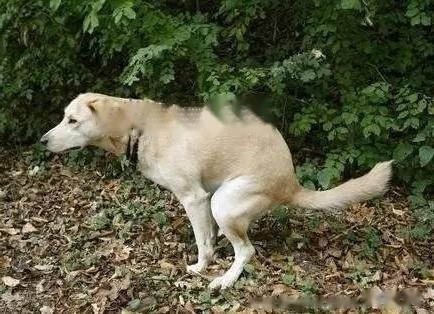Don't underestimate the excrement of dogs. It hides important information about the health of the dog. As long as the owner observes carefully, some diseases can be prevented and detected early.

1. The secret of color (from the color of poop to know whether the dog is healthy)
1. Red poop: The owner must first check whether the dog is caused by anal The poop caused by the split is bloody, if not, it is likely to be bleeding from the lower gastrointestinal tract of the dog.
2. Orange poo: When a dog poop contains orange scum, or part of the poop is orange, it is likely due to poor digestion, resulting in the food not being fully absorbed.
3. Yellow poop: The color of poop at this time is relatively healthy, and it can be judged that the food the dog eats is high in carbohydrates. If the poop is dark yellow in color, it may also be caused by the destruction of a large number of red blood cells in the dog's body.
4. Gray-white stool: If the stool is white clay-like color, it may be due to jaundice or bile duct obstruction caused by stones, tumors, roundworms, etc., so that biliflavin cannot be excreted casually.
5. Brown poop: The color of healthy poop, but the food the dog eats is high in fat, so the intake of fat should be reduced in moderation.
6. Green poop: When the dog eats vegetables with high chlorophyll content such as celery and cucumber, it can also lead to excretion because it cannot be completely digested and absorbed by the stomach, or the acidity in the intestine is too high. Poop is green.
7. Black poop: Black poop will appear when the dog's stomach, duodenum, small intestine and other digestive organs bleed.
Second, the secret of the shape (from the shape of the poop to know whether the dog is healthy)
1. Healthy poop: the shape is cylindrical, and the hardness can be pinched with a paper towel.
2. Soft stool: I wanted to wrap it in a tissue, but it quickly penetrated through the paper, leaving traces on the ground. Reason: cold, cold, eating too much or too cold, can cause diarrhea.
3. Slender stools: Thinner than normal stools. Reason: This is a danger signal because the intestinal lumen is narrowed, or intestinal obstruction caused by ingestion of foreign objects.
4. Inlaid poop: Undigested things such as corn are embedded in the poop. Reason: The dog eats food that cannot be digested, because some foods are not suitable for the dog's stomach.
5. Small ball-shaped stools: one by one, the stools are small and hard, and only once every 2-3 days. Reason: Insufficient drinking water or improper diet can cause the dog to have dry stools and even difficulty in defecation.
6. Muddy stool: Muddy liquid stool, excreted chocolate-colored or brown-colored muddy stool, with a strong rotten smell. Cause: gastrointestinal mucosal damage, pathogen infection or peptic ulcer.
7. Watery stool: The stool is like running water. Although there are lumps in the stool, it is basically liquid. Reason: When a dog has watery stools, it may be a harbinger of a severe infection such as parvovirus infection and coronavirus enteritis, and it may deteriorate rapidly.
8. Mucus stool: There is mucus in the stool, with mucus and air bubbles on it. Cause: It may be that the rectal mucosa near the dog's anus is severely inflamed.
9. Tar stools: tarry stools with mucus and shapes. Reason: gastrointestinal bleeding, but over time, the blood has coagulated during excretion and mixed with the stool.
![[Dog Training 5] The training method of pet dog dining etiquette](/static/img/12192/12192_1.jpg)




